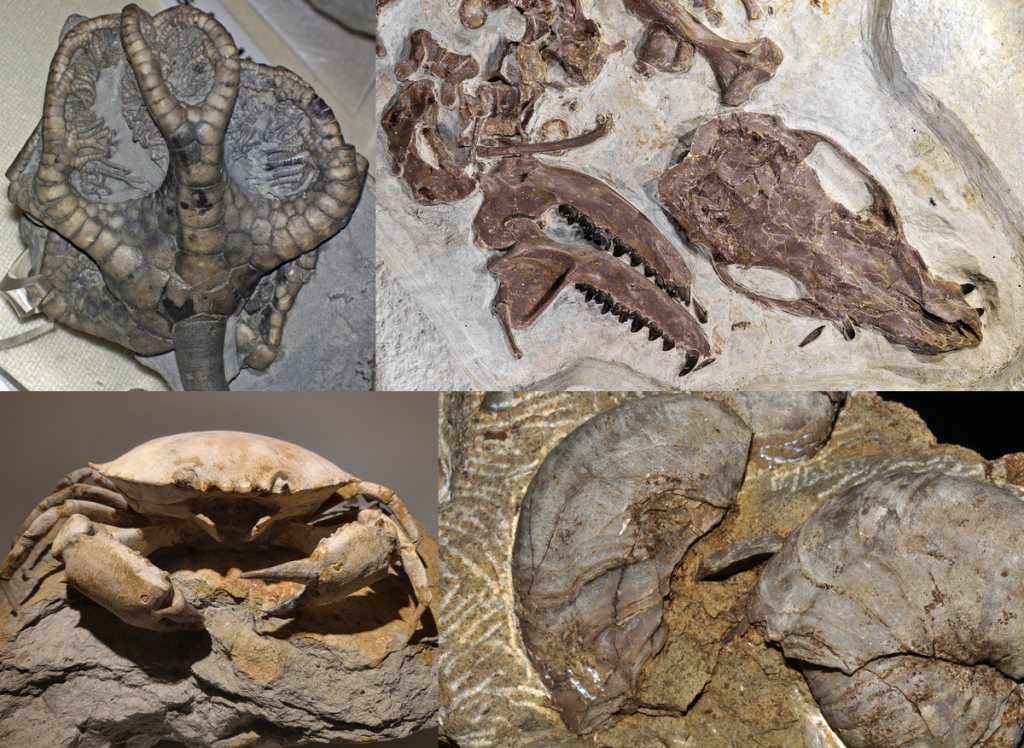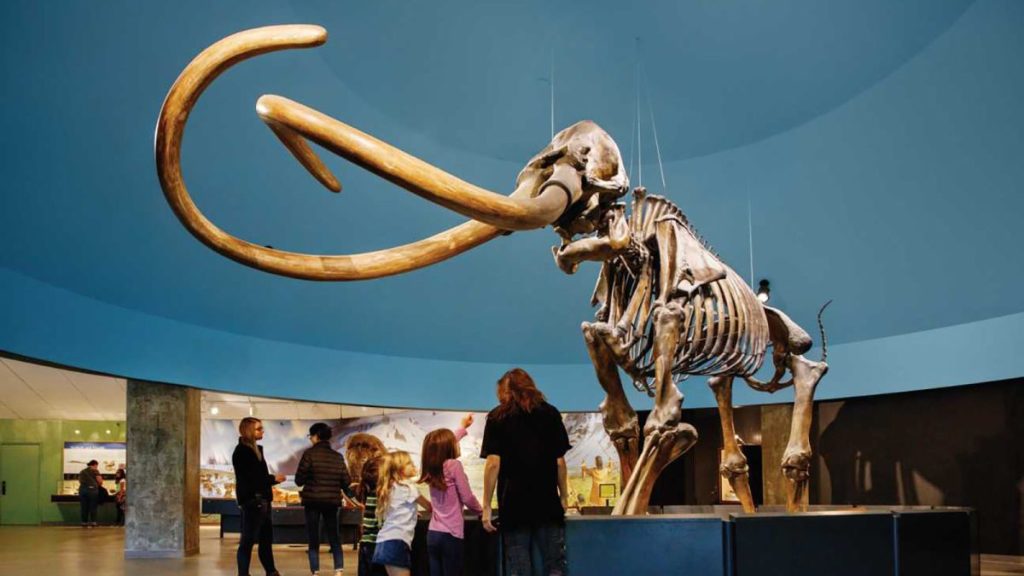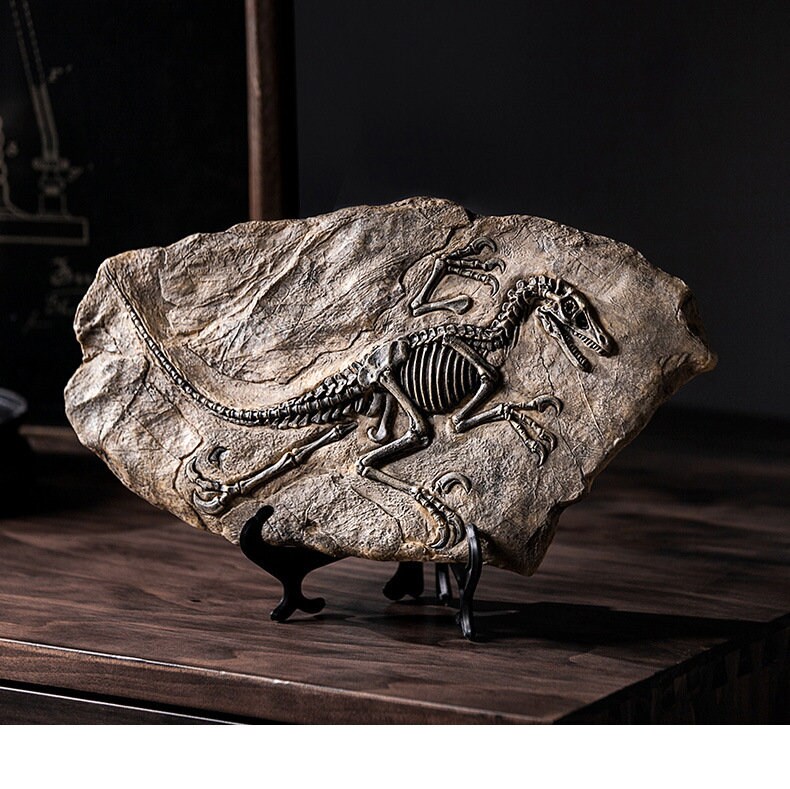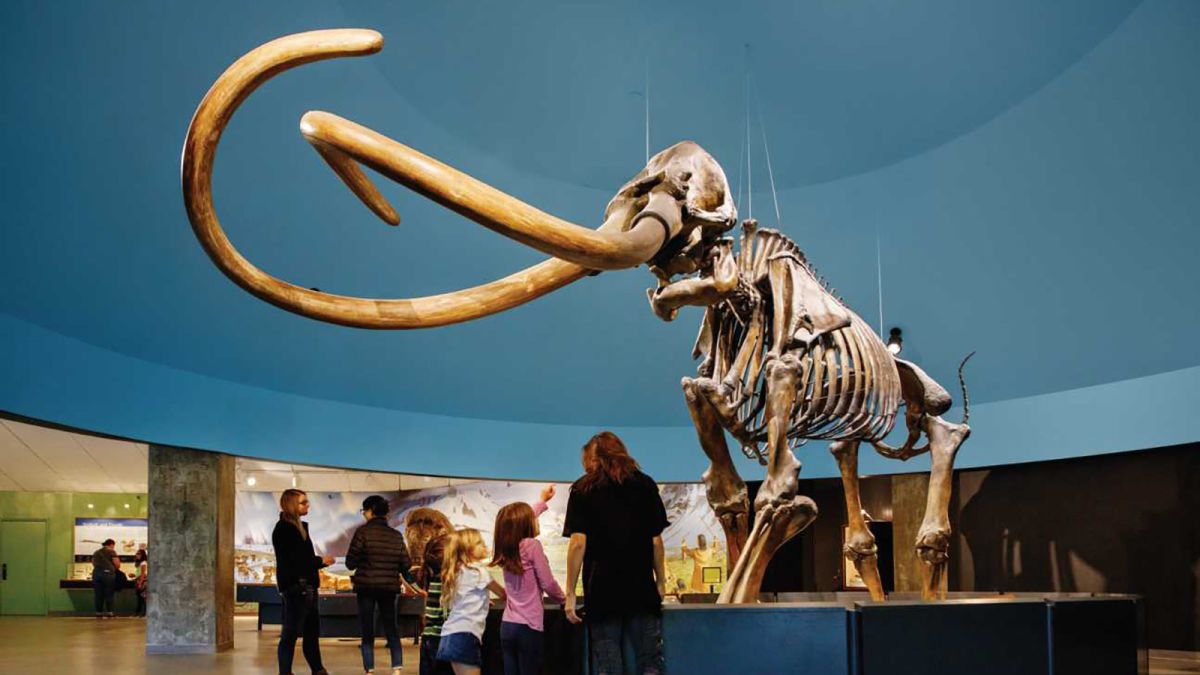Fossil Essentials: understanding what constitutes a fossil, how they come into existence, their various forms, and their significance.
Defining a Fossil
A fossil is essentially a preserved remnant of a once living organism that has been encased and conserved within rock formations. A fossil could represent an entire organism, a fraction of it, or just a trace indicative of its existence, such as footprints or its former dwelling. The age of fossils spans from a mere 10,000 years to an astonishing 3.48 billion years, and their sizes can vary from miniscule 0.001mm to colossal dimensions equivalent to a dinosaur.

Interesting Fossil Fact: The term “fossil” originates from the Latin word “fossilis”, translating to “dug up”.
The Role of Paleontologists

Paleontologists, scientists who dedicate their work to studying life forms from prehistoric times, have a vested interest in fossils. Their area of research is termed as paleontology.
Fossils serve as a time machine for paleontologists, offering them an opportunity to study flora and fauna from millions of years ago.
Fossils can provide insights into the appearance of prehistoric creatures, their movement patterns, behavioral tendencies, dietary habits, and their interactions with their environment and fellow organisms.
An Overview of The Fossil Record
The collective term for all discovered fossils is known as the “fossil record”. By analysing the fossil record, paleontologists can comprehend when specific species came into existence, when they vanished, and how they gradually evolved into other species.
Fossil Fact: The fossil record is far from being exhaustive. Each newly discovered fossil acts as a puzzle piece that fills in missing gaps, thereby enhancing our understanding of life from prehistoric times.
The Earliest Fossils
The oldest known fossils are estimated to be 3.48 billion years old. However, some older specimens exist in the form of chemical fossils (life remnants preserved in a chemical form) found in zircon crystals in Australia, believed to be about 4.1 billion years old.
The youngest fossils are about 10,000 years old.
E. Categories of Fossils
Fossils can be categorized into three primary types: body fossils, trace fossils, and chemical fossils.
Body fossils are essentially fossilized fragments of an organism’s body. More information on body fossils is provided later.
Trace fossils are evidence of an organism’s existence, like dinosaur footprints or the holes made by prehistoric plant roots. They don’t contain any bodily remains of the organism. More details about trace fossils are provided further below.
Chemical fossils are chemicals that originated from living organisms and are found in rocks. They can provide evidence of very early life forms.
The Concept of Microfossils
Microfossils are so small that they can only be studied with the aid of a microscope. Their size typically ranges between 0.001mm and 1 mm.
Micropaleontology is a specialized branch of paleontology that deals with the study of microfossils.
The Fossilization Process

“Fossilization” is the term used to describe the process through which an organism transforms into a fossil.
Typically, this process involves the minerals in an organism’s body being replaced by other minerals, creating a rock-like replica of the original organism.
Generally, an organism’s body decomposes over time, breaking down into basic chemicals until no trace of the organism’s original form remains. This process, known as decomposition, is facilitated by decomposers like bacteria and fungi.
Fossilization is a rare occurrence, largely due to the majority of organisms decaying in this manner.
Fossil Fact: Fossilization is incredibly rare; it is estimated that only one out of every million deceased organisms has the potential to fossilize. Moreover, it’s probable that the fossil, once formed, may never be discovered.
An organism’s soft tissue, such as skin and organs, usually decompose first. The hard parts, like bones, teeth, and claws, are more durable and thus more likely to fossilize. In plants, the leaves are most commonly fossilized.
Regions with fewer decomposers, such as those with low oxygen levels or colder climates, are more likely to generate a higher number of more detailed fossils.

Several different mechanisms lead to fossil formation. The most frequent process involves the gradual petrification of a plant or animal’s body parts, outlined in the steps below:
- The organism gets buried under sediment like sand, silt, or mud. This process tends to occur most readily in wet and watery environments, which is why fossils often form at the bottom of oceans, lakes, and rivers.
- Minerals carried by the water in the surrounding sediment replace the organic molecules from the remains of the organism.
- Fossil formation occurs when these minerals crystallize into solid rock. The most common minerals to form fossils are calcite (containing calcium carbonate), silicate (containing silicon dioxide), and phosphate (containing phosphorus).
- Sediments keep accumulating in layers over the fossil. For instance, a lake might be flooded by a river annually when the rains arrive, depositing a new layer of silt at the bottom.
As sediments accumulate over time, they compress the lower layers. Over time, this pressure fuses the sediments together into sedimentary rock.
Fossil Fact: Fossilized bones and teeth can be found in an array of colors, despite the original tissues being white. The colors are derived from the minerals that have infiltrated the tissue and crystallized. Phosphates can be jet black; red or orange fossils suggest the presence of iron-containing minerals; calcite results in gray-green fossils.
Fossil Formation in Tar and Resin
Fossils can also be preserved in natural substances such as tar or resin.
1. Tar Pit Fossils

Tar pits are regions where oil seeps to the surface, creating asphalt pools where animals can get trapped. The trapped animals sink into the asphalt, which preserves their bodies.
The La Brea Tar Pits in southern California is one of the most renowned tar pit fossil sites, where fossils of animals such as mammoths, saber-toothed cats, dire wolves, and American lions have been discovered.
2. Resin Fossils

Organisms and plants can also be naturally preserved in resin, a sticky substance produced by trees for protection. Small animals like insects and plants can get trapped in resin, which hardens over time and eventually fossilizes into amber.
There are many examples of insects and spiders preserved in amber. Occasionally, frogs and lizards have also been found preserved in this manner. The oldest known fossil in amber dates back 230 million years.
The science-fiction film Jurassic Park popularized the idea of extracting dinosaur DNA from the blood of mosquitoes preserved in amber.
3. Other Fossil-Generating Environments
In extremely cold regions, plants and animals do not decompose because bacteria and fungi cannot survive under such conditions. In 2013, scientists in Siberia unearthed an entire mammoth that had been frozen for 40,000 years.
Organisms that fall into peat bogs can also be remarkably well preserved. Peat bogs, which are acidic and low in oxygen, make it difficult for decomposers to survive. In 2016, scientists discovered remnants of a dinosaur brain that had been preserved and mineralized in a peat bog in England. This dinosaur lived 133 million years ago.
In extremely arid conditions like deserts, bacteria and fungi cannot survive. Thus, dead plants and animals may simply dehydrate or mummify upon death. A mummified leaf from a tree in a 23-million-year-old forest in New Zealand has aided researchers in understanding how trees adapted to higher levels of CO2 during those ancient times.
Geological Time Scale
Paleontologists and geologists, who are scientists studying rocks, often measure time not merely in years or decades but in eras, periods, and other units defined by the geological time scale.
The geological time scale serves as a chronometer using strata of rock as a reference point. Rock forms in layers, with each layer corresponding to different epochs. The oldest layers are deepest, with each subsequent layer forming atop the previous one.
The age of fossils generally corresponds to the age of the rock layer in which they are found. For instance, fossils found in the Cretaceous layer of rock belong to animals and plants that lived during the Cretaceous Period.
Using the geological time scale, paleontologists can determine when a specific fossil lived and when it became extinct. If a certain fossil is abundant in one rock layer but absent from the next, it likely indicates that the species went extinct at that time.
Time for a Question
Fossils of a prominent group of large terrestrial animals are present in Cretaceous rocks but absent from Paleogene rocks. Can you guess which type of animals these might be?
